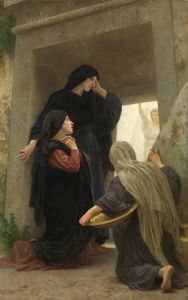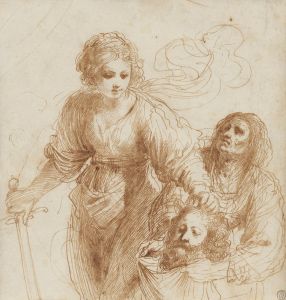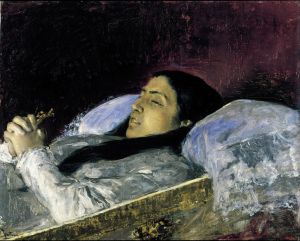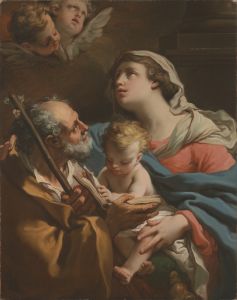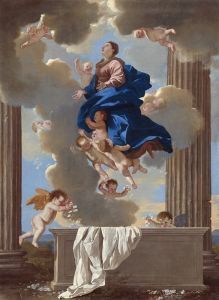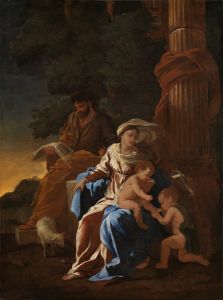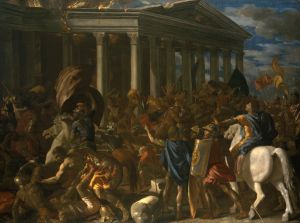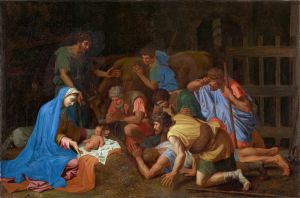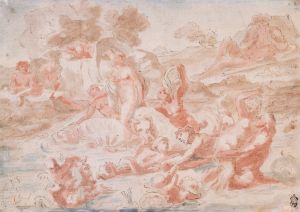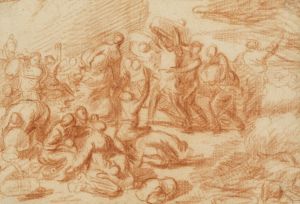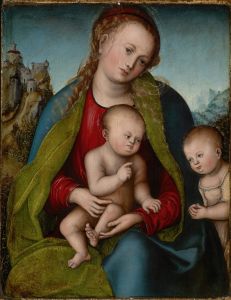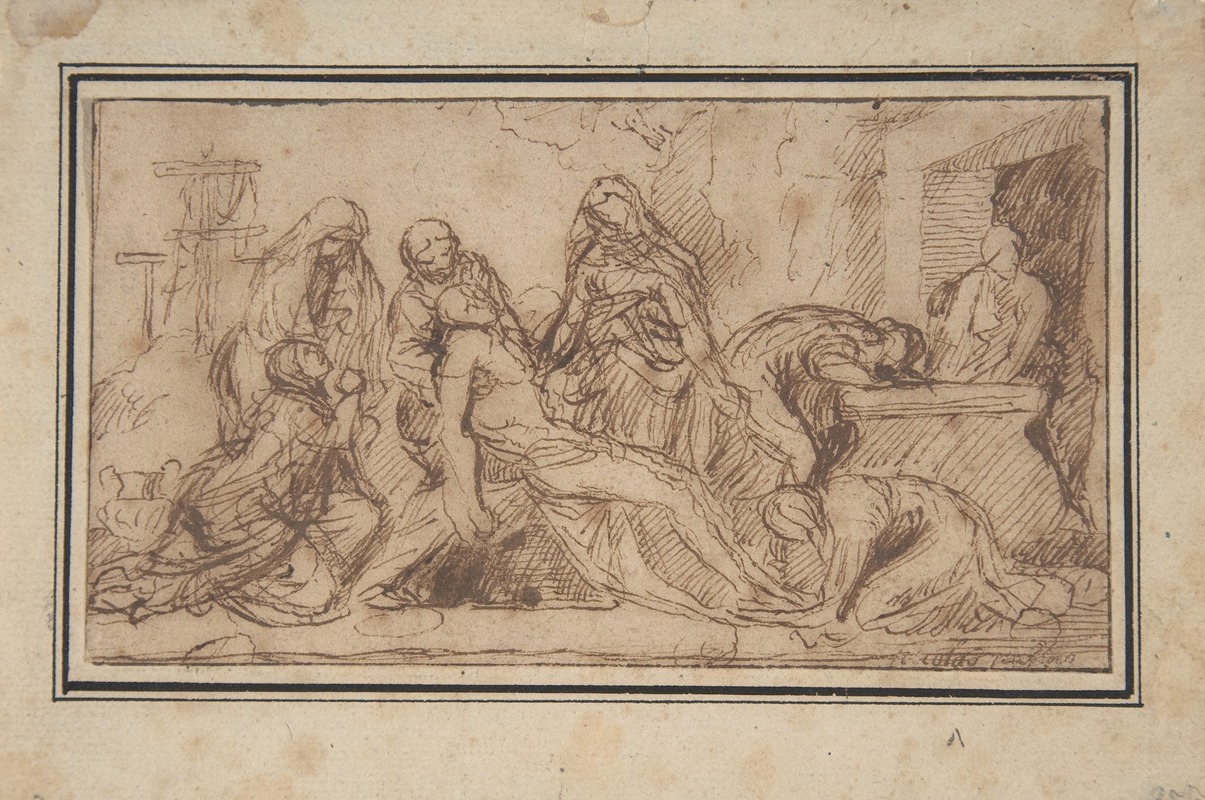
The Entombment
A hand-painted replica of Nicolas Poussin’s masterpiece The Entombment, meticulously crafted by professional artists to capture the true essence of the original. Each piece is created with museum-quality canvas and rare mineral pigments, carefully painted by experienced artists with delicate brushstrokes and rich, layered colors to perfectly recreate the texture of the original artwork. Unlike machine-printed reproductions, this hand-painted version brings the painting to life, infused with the artist’s emotions and skill in every stroke. Whether for personal collection or home decoration, it instantly elevates the artistic atmosphere of any space.
Nicolas Poussin's "The Entombment" is a significant work of art that exemplifies the Baroque style, characterized by its dramatic use of color, light, and composition. Poussin, a French painter who spent most of his career in Rome, is renowned for his classical approach to painting, drawing inspiration from antiquity and the Renaissance. "The Entombment" is one of his many religious paintings, a genre in which he excelled.
Created around 1650-1655, "The Entombment" depicts the biblical scene of Christ's body being placed in the tomb after the crucifixion. This moment is a poignant subject in Christian art, capturing the sorrow and solemnity of Christ's followers as they lay him to rest. Poussin's interpretation of this scene is marked by his meticulous attention to detail and his ability to convey deep emotion through the figures' expressions and gestures.
In the painting, Poussin employs a balanced composition, a hallmark of his style, which reflects his admiration for classical art. The figures are arranged in a harmonious manner, guiding the viewer's eye through the scene. The use of chiaroscuro, the contrast between light and dark, enhances the drama of the moment and highlights the central figures, drawing attention to Christ's lifeless body.
Poussin's palette in "The Entombment" is both rich and subdued, with earthy tones that lend a somber mood to the painting. The artist's skillful use of color not only adds depth to the composition but also serves to underscore the emotional weight of the scene. The figures' garments are rendered with careful attention to texture and form, showcasing Poussin's mastery of the human figure and his ability to convey the tactile qualities of different materials.
The painting is also notable for its emotional depth. Poussin captures the grief and devotion of Christ's followers with sensitivity and nuance. Each figure is imbued with a distinct personality, their expressions and postures reflecting their individual responses to the tragedy. This focus on human emotion is a key element of Poussin's work, setting him apart from many of his contemporaries.
"The Entombment" is housed in the National Gallery of Art in Washington, D.C., where it continues to be a subject of study and admiration. The painting is a testament to Poussin's ability to blend classical ideals with the emotional intensity of the Baroque, creating a work that resonates with viewers on both an intellectual and emotional level.
Poussin's influence on the development of Western art is profound, and "The Entombment" exemplifies his contribution to the Baroque period. His dedication to classical principles and his innovative approach to composition and emotion have left a lasting legacy, inspiring countless artists in the centuries following his death. Through works like "The Entombment," Poussin has secured his place as one of the most important figures in the history of art.





